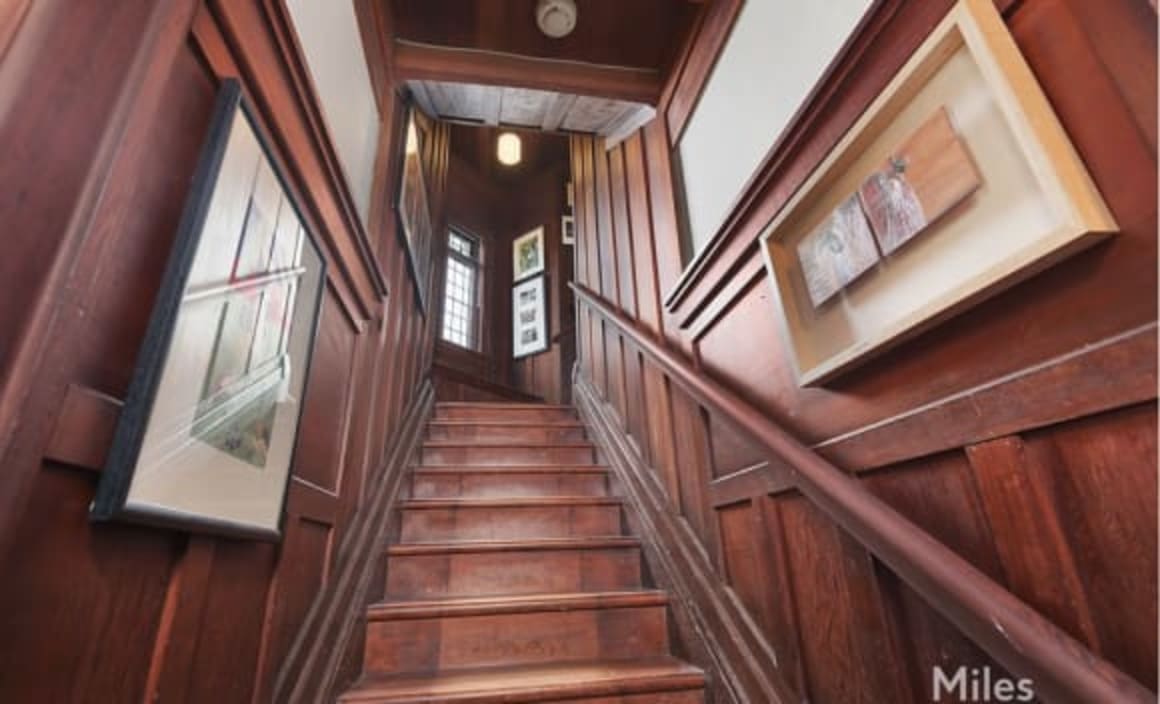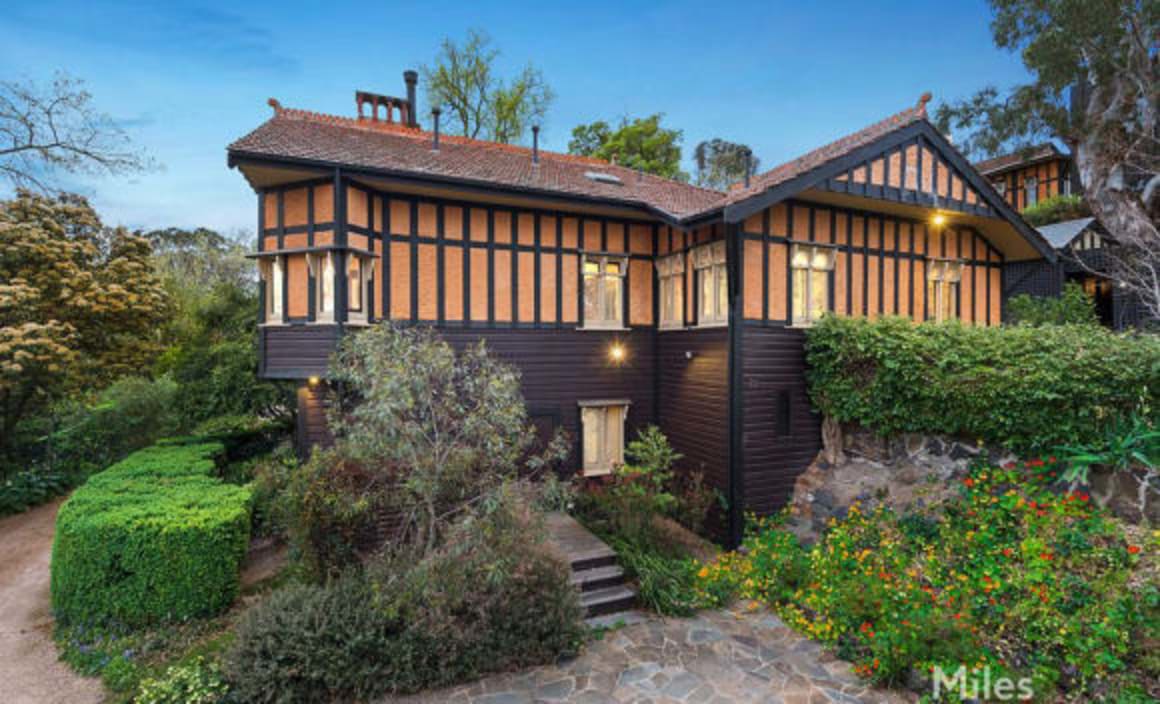Harold Desbrowe-Annear's Chadwick House, Eaglemont sold

Architect Harold Desbrowe-Annear was the pioneer of the medieval movement in Australian home design, especially in Melbourne's north-east.
Born into a Bendigo mining family in the 1860s, raised in Richmond, and matriculating from Hawthorn Grammar, Annear was articled in the office of architect William Salway. The office was designing trophy homes - Raheen for Edward Latham in Kew, Moondah for James Grice at Mt Eliza and Millswyn Court for James Gatehouse in South Yarra.
Desbrowe-Annear, who was following the English Arts and Crafts movement closely, was responsible for much of the medieval-inspired work in Heidelberg, Ivanhoe, Greensborough and Alphington. His Macgeorge house at the confluence of the Yarra River and Darebin Creek is still seen as a stunner.
In the early 1900s, the then Ascot Vale-based Desbrowe-Annear and his wife Florence went to live at Eaglemont, near Heidelberg, where his father-in-law, James Chadwick, had bought three building blocks high on Mount Eagle for £170.
The couple built a home for themselves that differed from the other two as it initially had a corrugated iron roof, painted red to replicate expensive Marseilles-pattern metal tiles. The tiles were added at a later date.
The father-in-law's neighbouring residence, which became known as Chadwick House, has recently had a suitable offer after having a price revision to $3 million. Miles Real Estate Ivanhoe agents Stewart Oldmeadow and Elisse Farquhar initially gave a $3.15 million to $3.35 million guide.
A medieval-inspired Arts and Crafts-style home, it has half-timbered roughcast walls, a hipped and gabled Marseilles-patterned tile roof, arcaded chimney stacks and cantilevered gables.

The house, which was added to the Victorian Heritage Register in 1996, sits in 1460 square metres of established gardens on The Eyrie. Its views were captured by artists of the Heidelberg School, including Arthur Street and Walter Withers, who mixed socially with the Desbrowe-Annears.
The home was first sold in 1922. It last traded in 1988 for $715,000 when sold by university professor Robert Reid to the architect Peter Crone and his wife Jane, who undertook an award-winning restoration. The property has been returned to its original condition, winning Crone the national award for heritage from the Australian Institute of Architects in 2008.
Crone first became aware of DesbroweAnnear in the 1960s, when he was a student of architecture at RMIT on a class visit to Eaglemont to view homes designed by Desbrowe-Annear and Walter Burley Griffin. The class text, Robin Boyd's Australia's Home (1952), referred to Annear's inventive approach. "Every new commission for a house was an invitation to experiment with a new device for a window or a cupboard or a detail of construction," Boyd wrote.

In 1902, Desbrowe-Annear gave a lecture at his local library in which he quoted the emerging designer William Morris's 1880 lecture The Beauty of Life: "Have nothing in your houses that you do not know to be useful or believe to be beautiful."
Embracing open planning, Chadwick House is a four-bedroom, two-level home with a stately dining room, a library and a living area with adjoining sitting room, opening to a veranda with views. Inside it has extensive timber panelling, with Charles Voysey-style built-in furniture and storage space.
Guided by notions of ventilation, aspect, sunshine and views, along with a healthy atmosphere, the home comes without the then very dominant long passageway.
Its swagged and ogee-arch slatted balcony balustrading was borrowed from northern European 14th and 15th century domestic styles.

These are exemplified in the white roughcast and black-stained timbering - an early example of medieval revival style unique to Heidelberg.
Harriet Edquist's Harold Desbrowe-Annear 1865-1933: A Life in Architecture suggests the architect was an iconoclast and maverick, having been trained in the academic classicism of the 1880s. She describes the three Eaglemont homes as representing a "remarkable episode in Australian domestic architecture".
By 1914, Desbrowe-Annear was living in South Yarra, with his upmarket clients commissioning Glynt at Mt Martha for the Henty family, descendants of Victoria's first European settlers. It bears a similarity to another of his designs, Delgany at Portsea.
After his death in 1933, Edquist notes, Desbrowe-Annear's work was soon eclipsed by the modern movement, which was not interested in history or acknowledging its debt to pioneers.
This article was first published in The Weekend Australian.